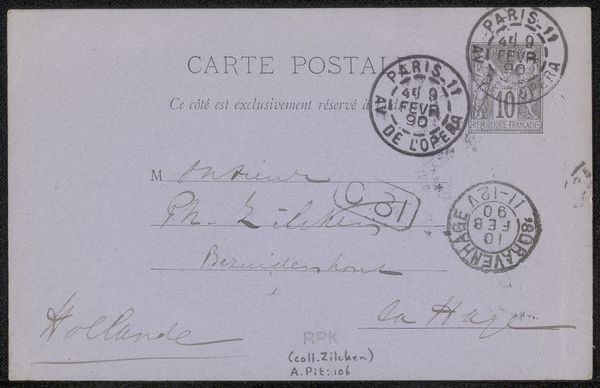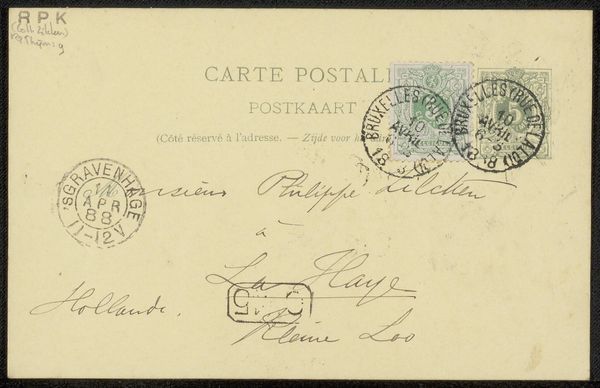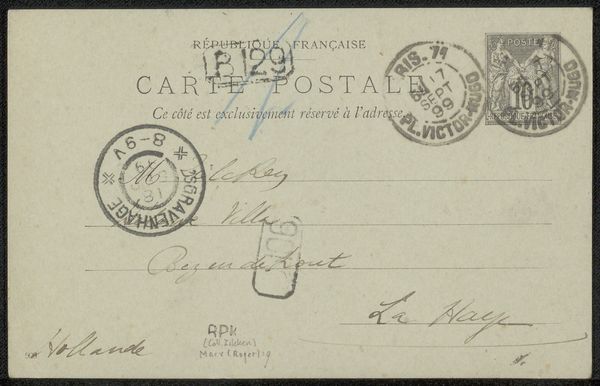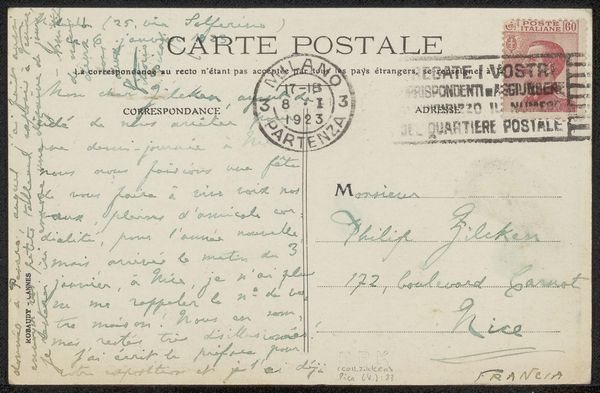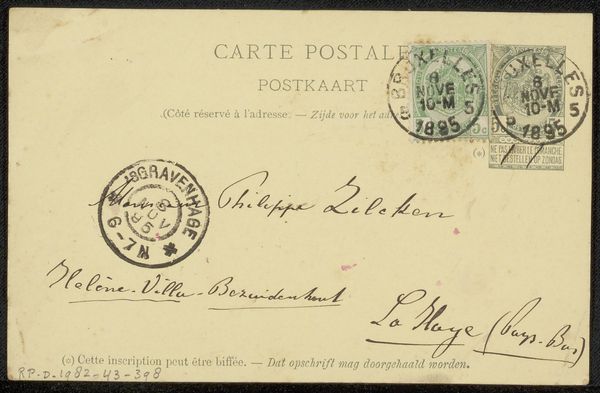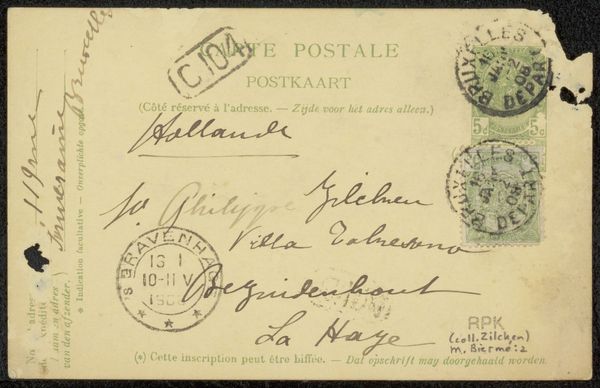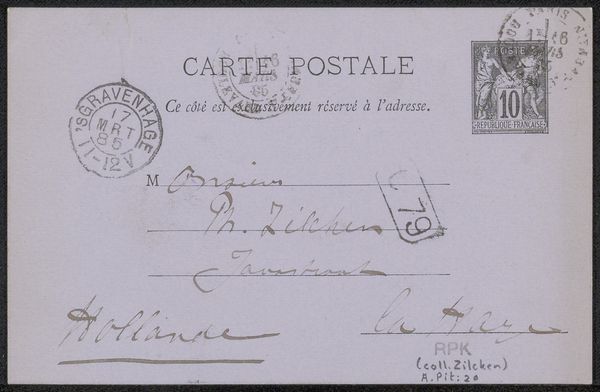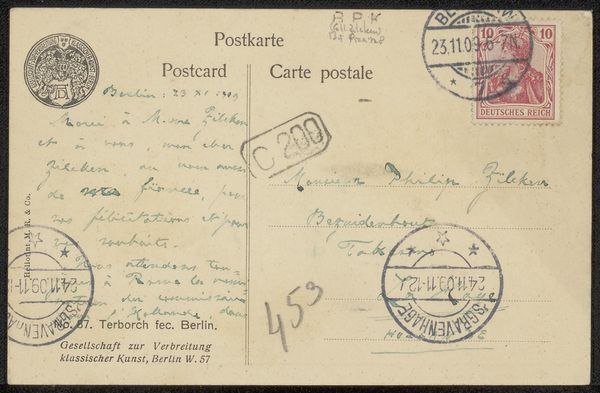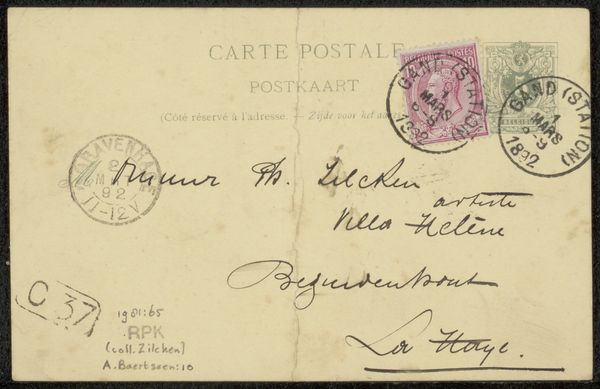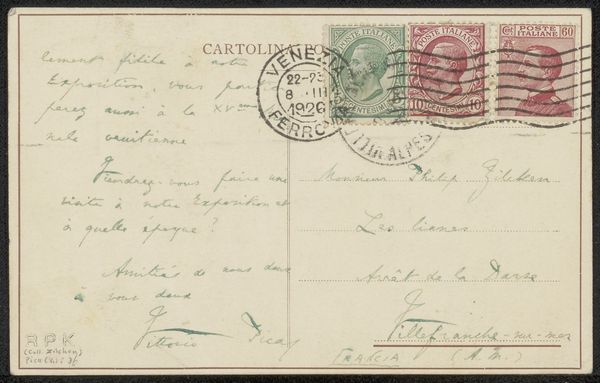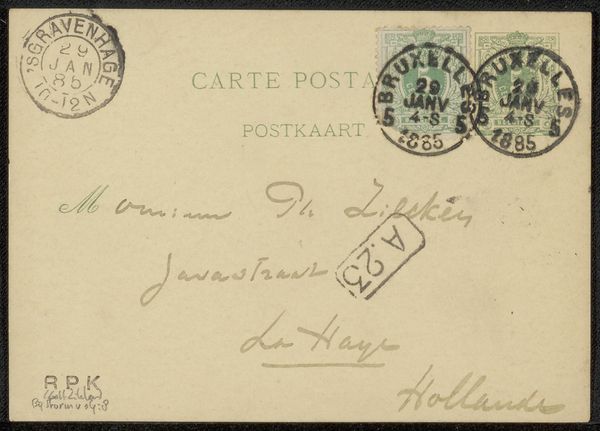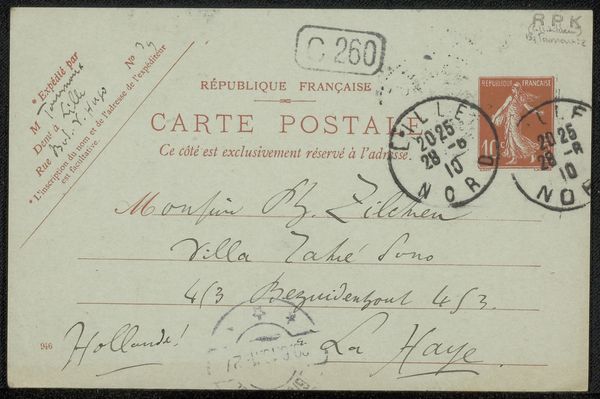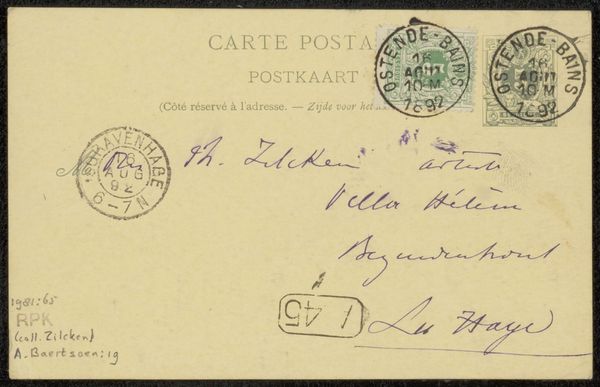
paper, photography, ink, pen
#
portrait
#
comic strip sketch
#
quirky sketch
#
pen sketch
#
paper
#
photography
#
personal sketchbook
#
ink
#
idea generation sketch
#
sketchwork
#
ink drawing experimentation
#
sketchbook drawing
#
pen
#
storyboard and sketchbook work
#
sketchbook art
Copyright: Rijks Museum: Open Domain
Curator: Let’s discuss this postcard addressed to Elsie Maud Cownie. It was likely sent in 1906 by Philip Zilcken, and it's made with ink on paper and photography. What are your initial thoughts? Editor: It's so simple, almost like a glimpse into a personal correspondence. I notice the postmarks and handwritten addresses, connecting us to a specific moment and location in time. What do you see in this piece? Curator: For me, the postcard reveals much about the material conditions of communication in the early 20th century. Consider the labor involved: the manufacture of the card itself, the photographic process, Zilcken's hand inscribing the message, and the postal workers who facilitated its journey. Each mark and stain speaks to a chain of production and distribution. Editor: So you see value in understanding how it physically came to be? Curator: Exactly! The material is humble, paper and ink, things readily available and cheap even back then, but that simplicity belies a complex web of social connections. What was Zilcken's relationship to Cownie? Where was this postcard produced? Thinking about these questions moves us beyond aesthetic appreciation and towards an understanding of the object's place in a broader cultural landscape. Editor: That makes me think about the intended audience of the piece too – not necessarily a gallery audience, but someone specific, shaping its function and purpose. Curator: Precisely! It’s not trying to be high art in the traditional sense, but by considering its function and materiality, it offers insight into a different kind of aesthetic experience, one tied to the everyday lives of its maker and recipient. This opens our minds to what "art" can really mean. Editor: I never thought I would appreciate a simple postcard like this. Curator: And that's exactly the power of examining art from a materialist perspective! It lets us re-evaluate and consider artistic worth on much more grounded, equitable terms.
Comments
No comments
Be the first to comment and join the conversation on the ultimate creative platform.
